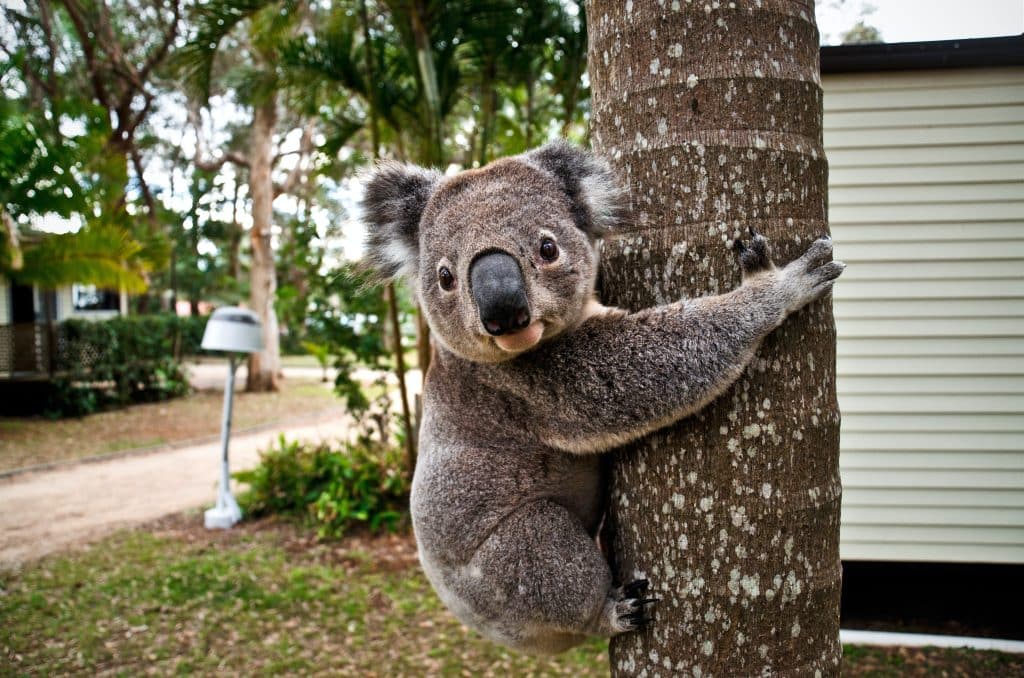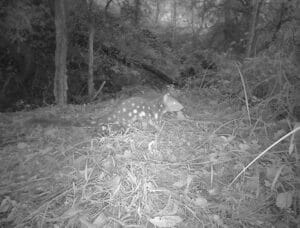
Many people are surprised to learn Koalas do travel around on the ground quite a bit. Although Koalas are arboreal, or “tree dwelling” mammals, generally spending 20+ hours or more of their day sleeping, when they need to change trees they don’t swing from tree to tree like a monkey, but descend to the ground and walk to the next tree. Koalas walk slowly as they are not adapted to walking on the ground. However, when threatened they can move quite fast to the nearest tree, which they ascend at a rapid rate thanks to their very long sharp claws. They are most active at night and around dawn and dusk, but can also be seen moving around on the ground during the day if they have been disturbed, or are seeking shelter from the weather. They are more active on the ground in warmer months with both sexes looking for mates and young males seeking their own territories.
The home range
Although a solitary animal, many koalas can live in overlapping territories called their “home range”. The home range may vary in size from a few hectares to many many hectares depending on the quality of the habitat and the density of the population. Where habitat is good, with plenty of primary feed trees, their home range may be smaller, and they don’t need to move around much, but where habitat is fragmented by farms, parks or other cleared areas, housing and roads, their home range needs to be larger and koalas may travel extensively throughout their home range seeking suitable feed trees or a mate. Male koalas travel throughout their home range during mating season and their grunty bellows may be heard during Spring as they advertise their presence to nearby females.
Studies have also shown Koalas will travel across areas dangerous to them, such as roads and open spaces, to seek suitable feed trees, a mate, or their own territory, and this is when they are at their most vulnerable. Although they have very sharp claws and strong teeth, and can certainly fight back, they are not a match for dogs and motor vehicles, often suffering fatal injuries.
Threats to koalas
In NSW, motor vehicle strike is a key threat to koalas and there has been much research on ways to make crossing the road safe for koalas, including rope crossings, bridges, tunnels, exclusion fencing, flashing warning signs and even audio deterrents but koalas continue to be hit by cars as these are usually only installed on new highways or new roads.
Protecting our koalas
So what can we do to avoid hitting a koala on the road? They are difficult to see, being grey against a grey background, often sitting on the side of the road or even the middle of the road in poor light. Driver education is the key, please just slow down and take care at dawn and dusk, and during the night in areas where koalas are known to be, watch the road ahead and slow down if you see something, be vigilant and you may just save a life.
Which brings us back to the question – Why did the koala cross the road? He just wanted to get SAFELY to the other side.
by Lauren Booth




